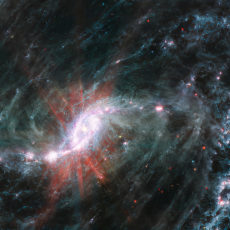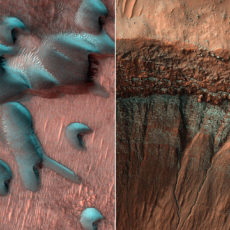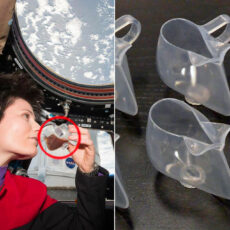
Lenticular galaxies like NGC 612 typically feature a central bulge and disk similar to their spiral counterparts, and this amazing edge-on view, captured by the Hubble Space Telescope, shows just that. Dust and cool hydrogen gas make up the majority of NGC 612’s galactic disc, the plane of matter we see in orange and dark red.

It’s located in the Sculptor constellation approximately 400 million light-years away and is easily visible from Earth’s southern hemisphere. Since NGC 612 is classified as an active galaxy, its center appears over 100 times brighter than the combined light of its stars. It is also considered a Seyfert galaxy, the most common type of active galaxy, which means it emits large amounts of infrared radiation despite looking normal in visible light.
- INSPIRE CURIOSITY – The NASA Lunar Telescope allows your child to see the moon in incredible detail; the perfect gift for girls and boys interested...
- HIGH-QUALITY OPTICAL GLASS AND FINDER SCOPE – This easy-to-use telescope comes with a finder scope, low power, and high-power eyepieces; when used...
- TABLETOP TRIPOD & SMOOTH MOUNT SYSTEM – Use the included tripod to steady your Lunar Telescope for optimal viewing, with a smooth mounting system...
NGC 612 is also an extremely rare example of a non-elliptical radio galaxy, a type of galaxy that shows significant radio emissions – in this case, an association with radio source PKS 0131-36. Astronomers have only discovered five such radio-emitting lenticular galaxies in the universe,” said Claire Andreoli, NASA Public Affairs Officer.










